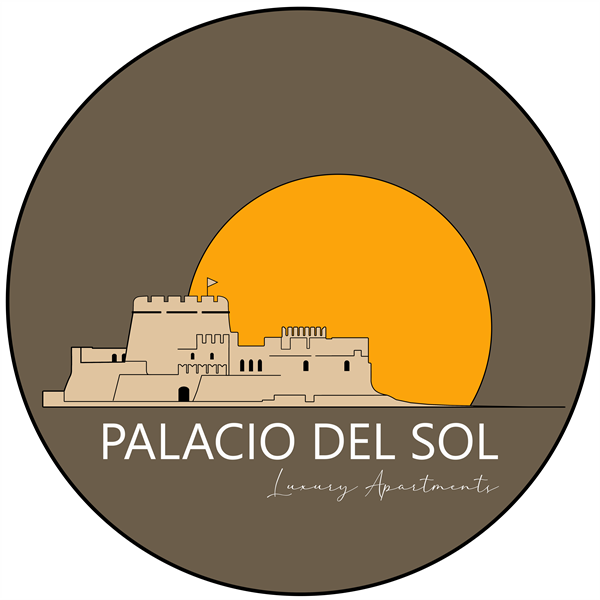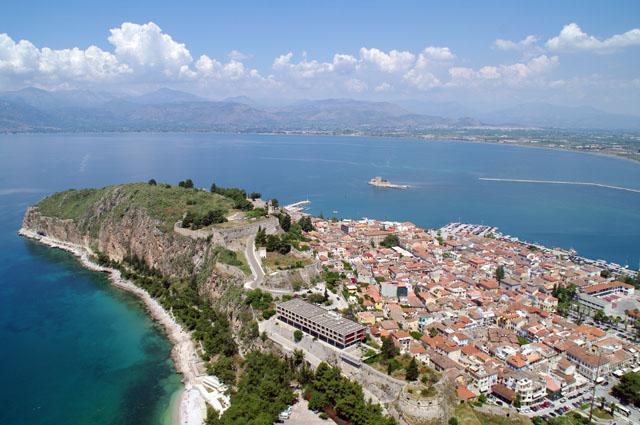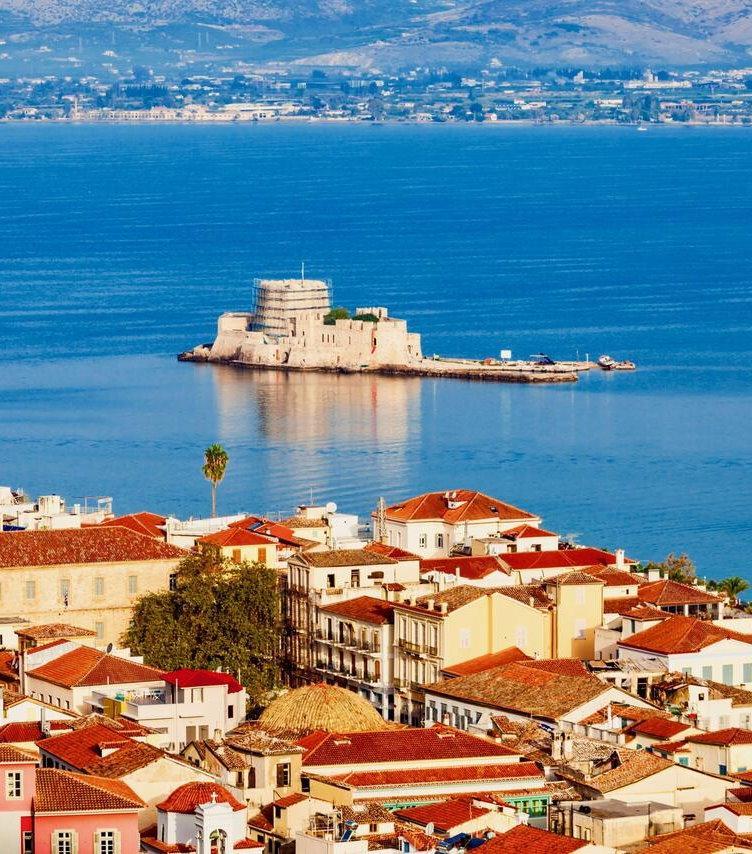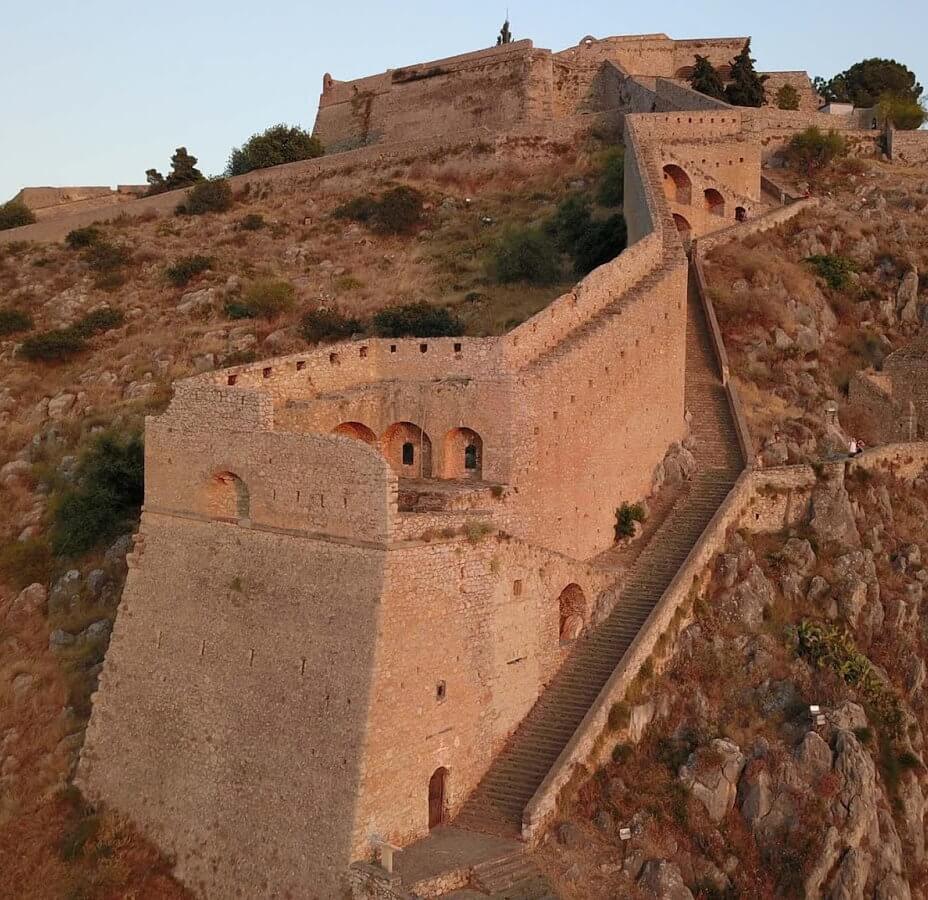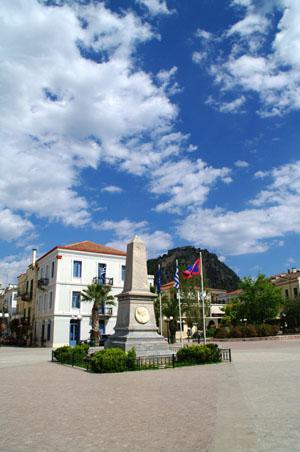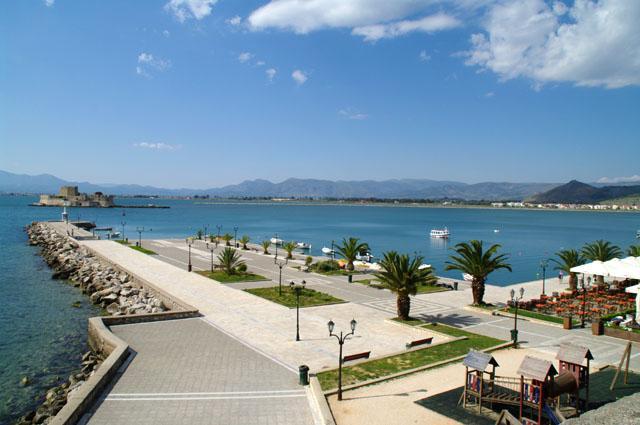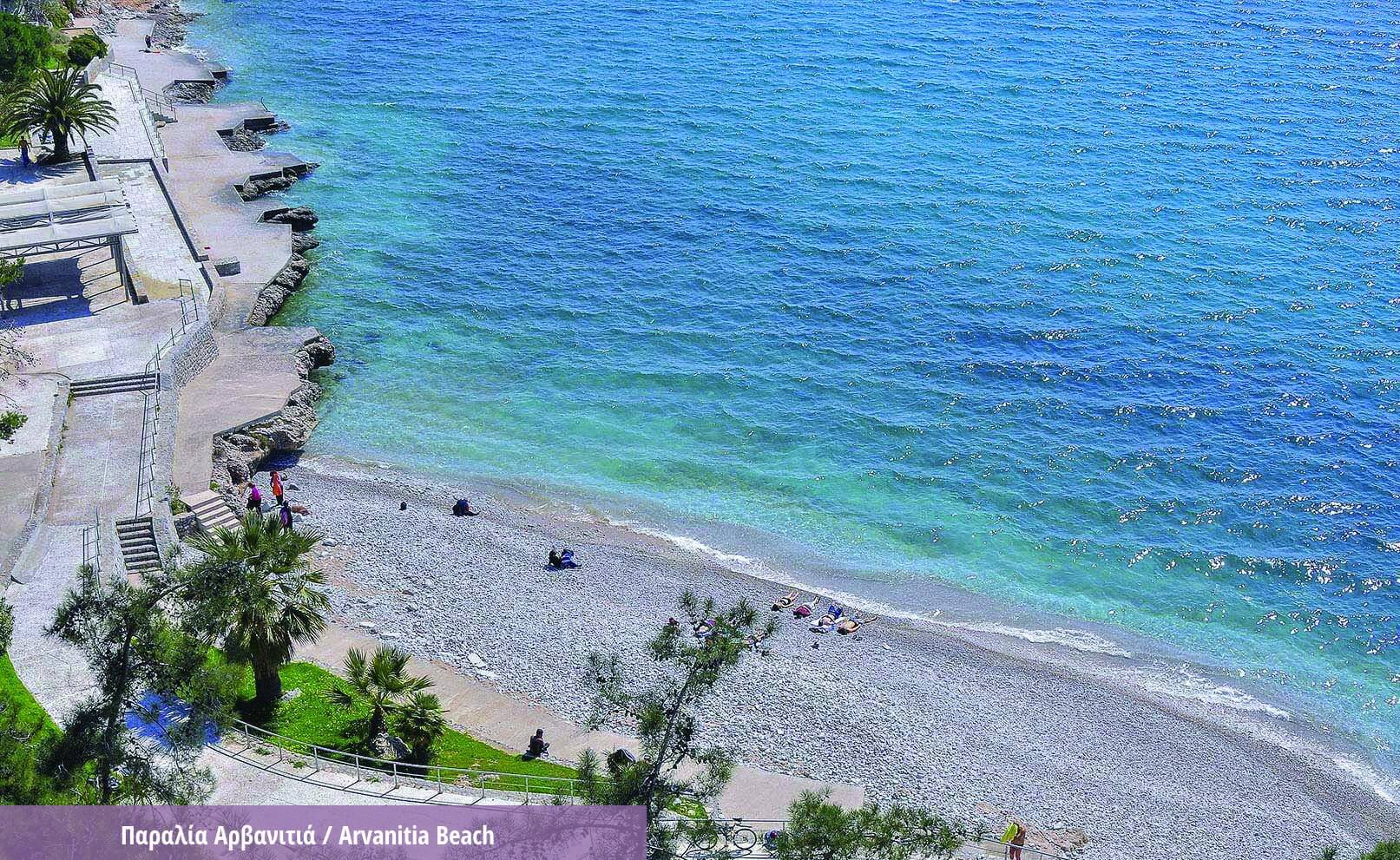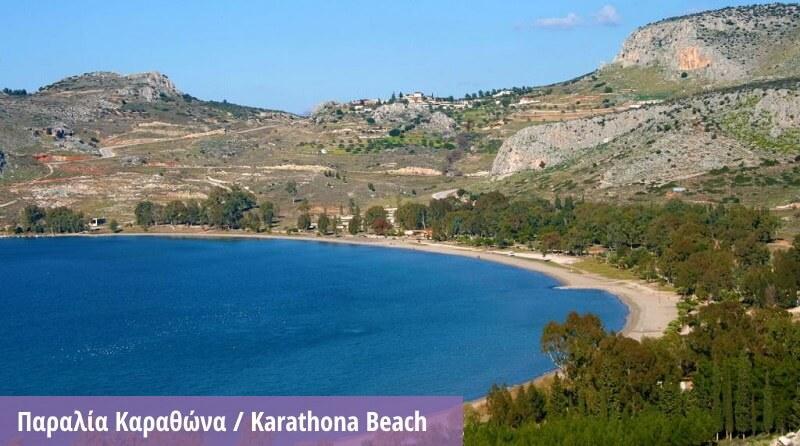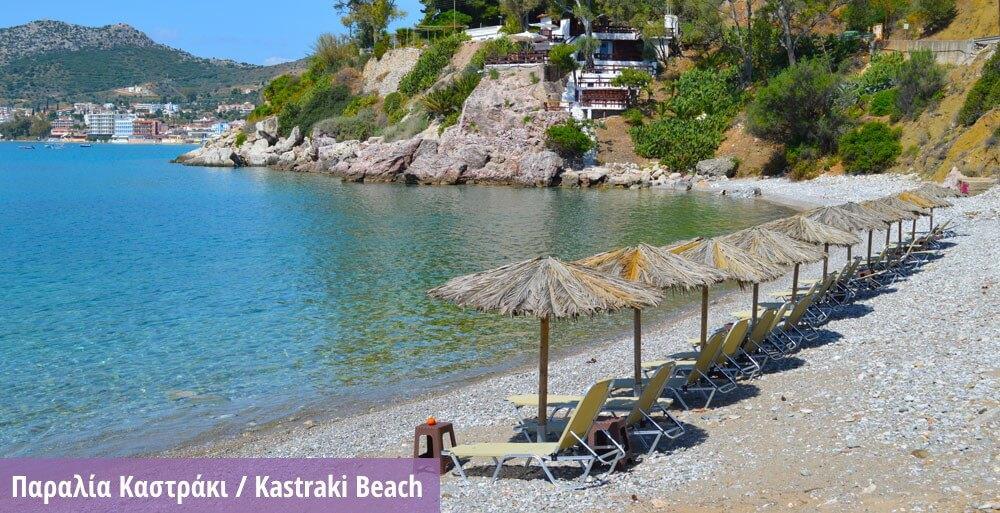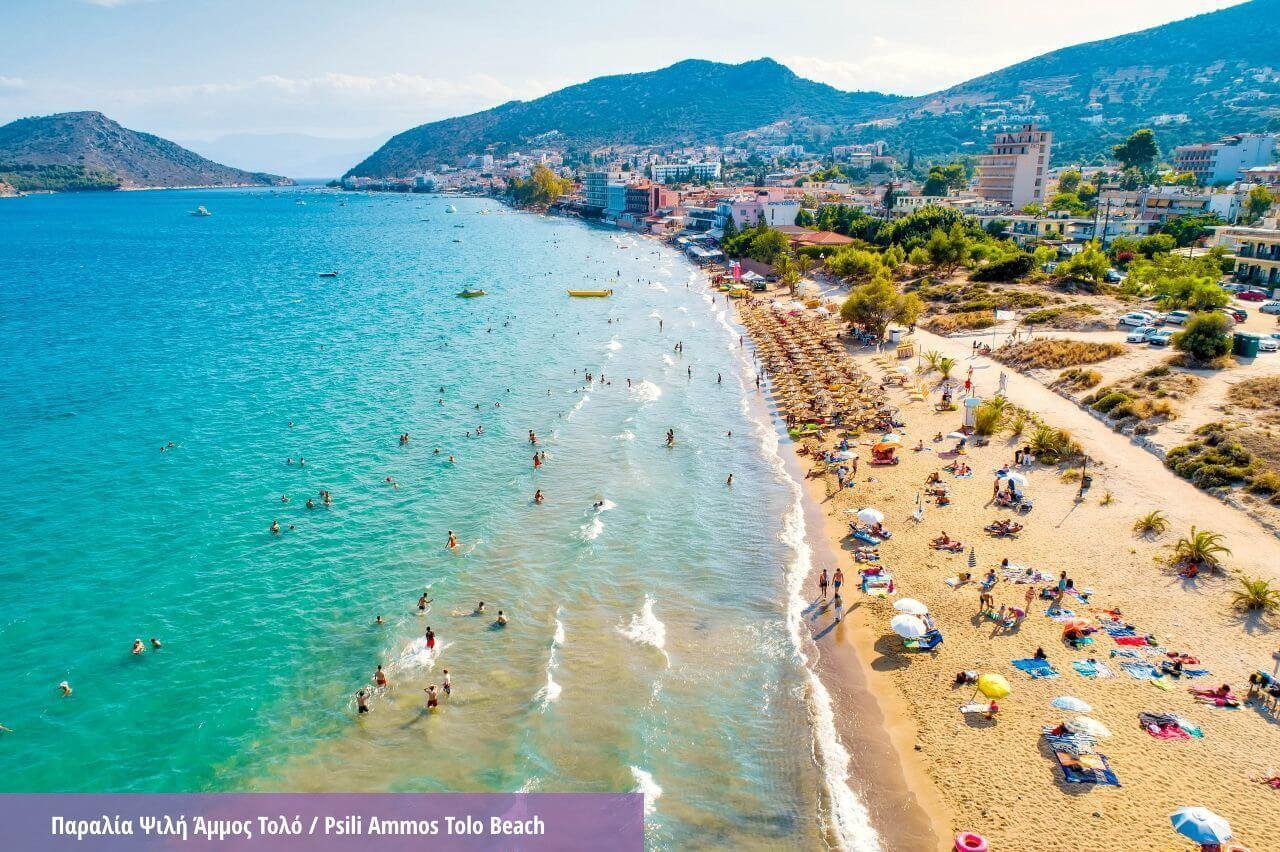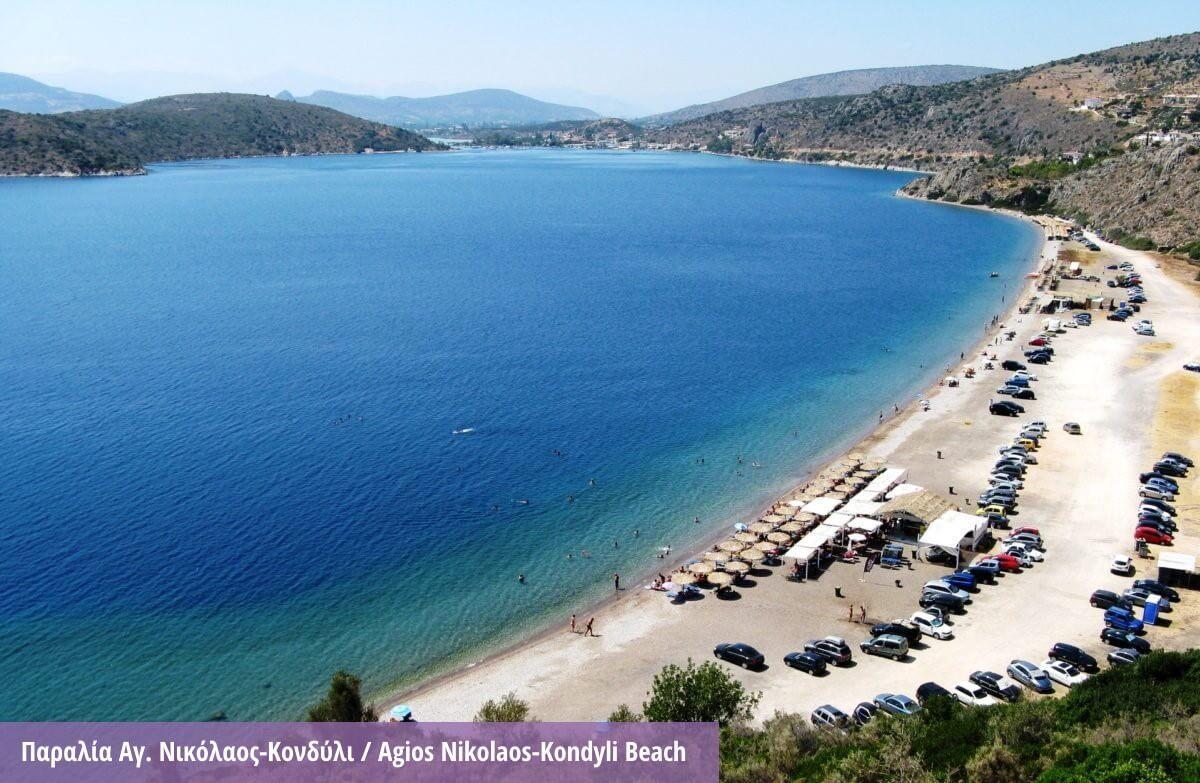Palacio del Sol like Palace of the Sun!
The history of Nafplio city
Nafplio,Nauplion or Anapli, the capitol of Argolis, is one of the best known and most beautiful cities in Greece. Apart from its administrative function it is also an important tourist centre, busy all year round.
According to legend, the city takes its name from its founder, Nauplios, the son of Poseidon and Amimoni. In ancient times Nauplion was basically overshadowed by Argos, which used it as a port from the 7th century BC.
During Byzantine times and from the 11th century onwards, its importance as a major trading centre increased steadily. A very important figure in the history of the city was Leo Sgouros, the ruler of Nauplion from about 1200. Whishing to extend his authority, he reached as far as Larissa in 1204. Further advancement was curtailed by the crusaders of the 4th crusade, who seized all the lands he had conquered, including Nauplion, between 1210 and 1212.
From then on, Nauplion went through a series of occupations: first the Franks, then the Venetians followed by the Ottoman Turks who lost control to the Venetians for a short while, before retaking the city.
The city of Nauplion, or the Napoli di Romania as it was named by the Venetians, took shape during the first Venetian occupation, when, towards the end of the 15th century, artificial banks were built into the sea to form the lower city. Today, this area is regarded as the historical centre of the modern city. Until that time habitation had only been possible on the rock of the Acronauplia. Other notable works of the period are the Castello di Toro and the Bourtzi.
In 1540, after a three-year siege, Nauplion surrendered to the Turks. During the first Turkish occupation of the city, which lasted from 1540 to 1686, Nauplion seems to have enjoyed special rights and privileges, especially towards the middle of the 17th century. In fact, it became the capitol of the Peloponnesus and the headquarters of the Turkish commander, Mora-Pasha.
On the night of 29th November in 1822, after many months of siege, the Palamidi fell to the Greeks as the result of a surprise attack led by Staikos Staikopoulos. From then on, the city began to develop at great speed and crowds of refugees flooded in from the surrounding areas that were still under the yoke of Turkish rule. The situation in the city is elegantly brought to life by Dimitrios Vyzantios in his popular play, 'Babylon', which is set in Nauplion in 1827.
The city reached the peak of its glory when it became the capitol of the Greek state from 1827 to 1834. On the 8th January 1828 the first governor of Greece, Ioannis Kapodistrias, alighted at Nauplion. The city was full of cafes, and in the salons of notable local families there were balls and literary soirees. A printing press was established and for a short while there was a reading room.
On 27th September 1831 Ioannis Kapodistrias was murdered outside the church of Agios Spiridon and, on 25th January 1833, the people of Nauplion welcomed Otto, the first king of Greece. He remained in Nauplion for a short while, until around the end of 1834 when the capitol of Greece was moved to Athens.
Tο Nαύπλιο βρέθηκε για τελευταία φορά στο επίκεντρο των γεγονότων, με τη Nαυπλιακή Eπανάσταση κατά του Όθωνα, που ξέσπασε τον Φεβρουάριο του 1862, και έμεινε γνωστή ως «Nαυπλιακά».
The last time that Nauplion became the centre of events was in 1862, when, during February of that year, the Nauplian revolution against Otto broke out. This event became known as the Nafpliaka.
After the Naupliaka, the city once again fell into decline. Nowadays, Nauplion is a provincial town, which, over the last few years, has developed into a popular destination for Greek and foreign tourists.
Suggestions for Beaches
Arvanitias: 10 minutes from the Palacio del Sol below Palamidi is the beach of Arvanitia with a length of only 200 meters. The beach of Nafplio which has been awarded the Blue Flag and is bathed by the waters of the Argolic Gulf. It is considered protected from the north winds. It is an organized beach as it has rental umbrellas, sunbeds, shower, WC and refreshment room.
Karathonas: 15 minutes from the Palacio del Sol, passing the crossroads for Palamidi, the bay of Karathonas appears from the hill. The beach of Nafplio which has been awarded the Blue Flag. It is an organized beach as it has rental umbrellas, sunbeds, shower, WC and refreshment room.
Psili Ammos: 15 minutes from Palacio del Sol in the direction of Tolofi, Psili Ammos beach in Tolo. It extends from the end of the bay of Tolo to the application, it is windless, an organism with crystal clear waters and a thin golden application, from its intention and its name. Remarkable is the clarity of its water, requirements in the morning, which require the beach to remind me of four things. Program awarded the Blue Flag and use demolition for families and required by the time I need seabed, the sounds of its waters and the marine playground I have. Psili Ammos is considered the most well-organized beach in Argolida, as it has sunbeds, umbrellas for rent, showers, cafes and restaurants. Bathers can also visit the small islands that surround the beach, Daskalio, Romvi and Koronisi (or Koronida) with local boats.
Ancient Asini (Kastraki): 15 minutes from Palacio del Sol, in the direction of Tolo.
It is located in the archeological site of the Acropolis of Ancient Asini. It is known as the port of Mycenae, as it is said that the Mycenaean ships sailed from there to Troy. Clear waters, shore with fine pebbles and sand, tranquility and seclusion, are the characteristics of the beach, which has no infrastructure and the visitor must be provided with water and essentials.
St. Nikolaos (Kondili): 20 minutes from the Palacio del Sol by car you can access the beach, but also if you are lucky, by boat. After Vivari and driving towards Kandia-Iria, you will meet a sign, which will invite you to turn right for the beach. After following the signage, in a few meters the bay of Vivari will be revealed in front of you and then the beach of Kondyli. Fine and thick pebble, sand.
Very large beach. Seabed mainly stony and in some places on the left side of the beach sandy. The beach of Kondyli is quite deep and with a steep slope.
Excursions - Sights
Nearest Pharmacy: about 200 m.
Nearest Mini Market: about 30 m.
Nearest Restaurant: about 50 m.
Nearest ATM: about 300 m.
Kalamata Airport 88.3 km.
Athens Airport El. Venizelos 167 km.
Nafplio National Gallery 1.1 km.
Nafplio War Museum 1.5 km
Peloponnesian Folklore Foundation 1.6 km.
Arvanitia (beach) 1.6 km.
Syntagma Square - Old Nafplio 1.7 km.
Palamidi Castle 0.7 km.
Akronafplia Fortress 0.7 km.
Archaeological Museum of Nafplio 0.7 km.
Bourtzi 2.3 km.
Karathona (beach) 3.8 km.
Distances
Nearest Pharmacy: about 200 m.
Nearest Mini Market: about 30 m.
Nearest Restaurant: about 50 m.
Nearest ATM: about 300 m.
Kalamata Airport 88.3 km.
Athens Airport El. Venizelos 167 km.
Nafplio National Gallery 1.1 km.
Nafplio War Museum 1.5 km
Peloponnesian Folklore Foundation 1.6 km.
Arvanitia (beach) 1.6 km.
Syntagma Square - Old Nafplio 1.7 km.
Palamidi Castle 0.7 km.
Akronafplia Fortress 0.7 km.
Archaeological Museum of Nafplio 0.7 km.
Bourtzi 2.3 km.
Karathona (beach) 3.8 km.
Useful Phones & Links
European Emergency Number: 112
First aid: 166
Police: 100, 2752098705
Fire Department: 199
Port Authority: 2752022974
Tourist information of Nafplio Municipality: 2752024444
KTEL Nafplio: 2752027323, 8011144000
Events - cultural - argolida.life
Weather: https://www.meteo.gr/cf.cfm?city_id=171
Currency: Currency Converter
Time: Current Local Time
